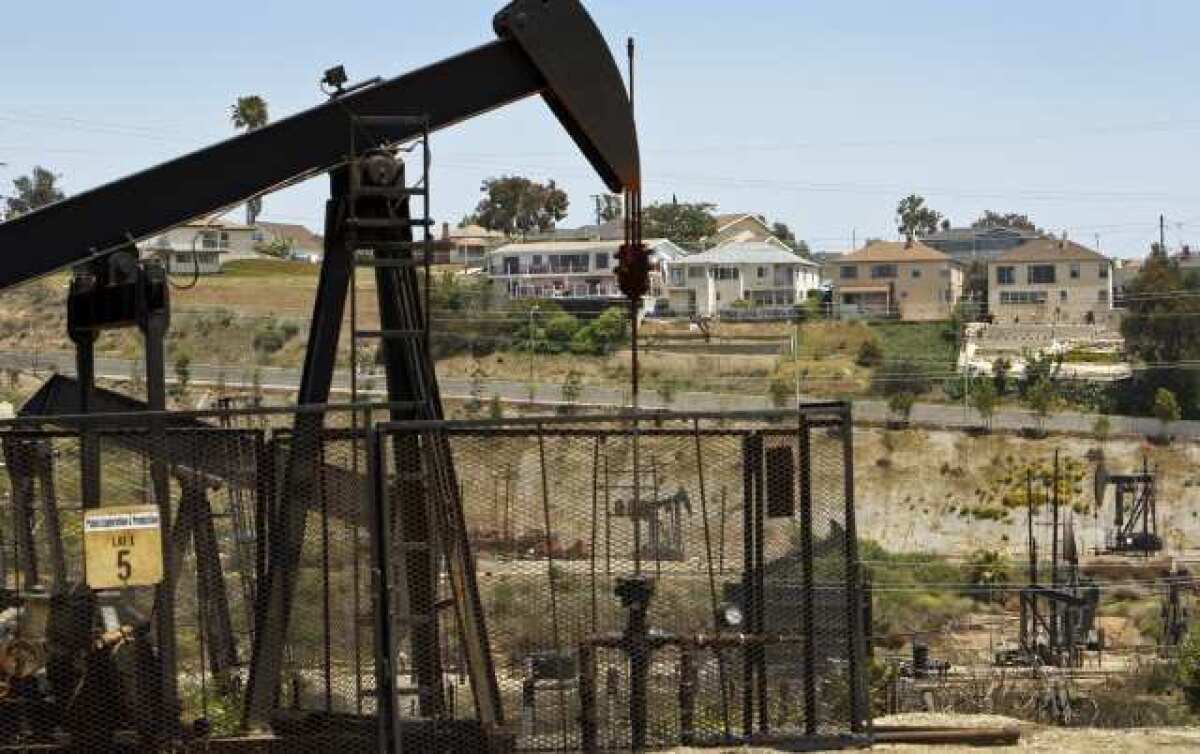Southern California air regulators adopt fracking rules

- Share via
In the absence of statewide regulations for hydraulic fracturing, Southern California air-quality officials have enacted their own reporting rules for the controversial extraction process driving the country’s oil and gas boom.
On Friday, the governing board of the South Coast Air Quality Management District adopted a rule that requires oil companies to notify the air agency 10 days to 24 hours before beginning drilling operations, including “fracking,” which involves injecting large volumes of chemical-laced water and sand deep into the ground to break apart rock and release oil.
That notice, including the location of the well, will then be posted on the agency’s website.
Under the new rule, companies are also required to disclose all the chemicals they use, a provision that sparked opposition from oil industry trade groups and Halliburton, one of the world’s largest oil field service companies and a pioneer of hydraulic fracturing.
Energy firms protested that such disclosure could reveal industry trade secrets, causing companies to lose their competitive advantage. Air district officials said proprietary information would not be posted on the agency’s website.
The local reporting and disclosure requirements come as state oil regulators draft statewide regulations. While state officials released proposed rules in December, the rule-making process has yet to begin and could last more than a year. Regulators have been gathering public comments on the draft regulations in a series of public workshops across the state.
But on Friday, local air district officials said there was an urgent need to collect more information about drilling operations, given the potential public health hazards in heavily populated areas.
“We have what amounts to an industry activity that is in many cases right up against homes, parks, schools,” Barry Wallerstein, executive director of the air district, told board members. “I cannot tell you sitting here today that these communities are not exposed to a toxic impact.”
Oil companies have said they have used hydraulic fracturing for decades without incident and support the state’s efforts to enact disclosure rules. Firms are exploring the technology’s potential to tap California’s Monterey shale, the largest shale oil formation in the continental United States.
A recent USC study, funded in part by a grant from the Western States Petroleum Assn., said tapping the oil-rich formation could boost the state’s economic activity by as much as 14.3% and create hundreds of thousands of jobs.
Though fracking has unlocked vast amounts of previously unreachable fossil fuels elsewhere, environmentalists and public health advocates in California have raised safety questions about the hundreds of chemicals used — many of them known carcinogens — and the potential for drinking water contamination.
ALSO:
Lawmakers want tougher rules for fracking
California issues proposed rules for ‘fracking’
While California considers fracking rules, legal battles flare elsewhere
twitter.com/mjmishak
More to Read
Get the L.A. Times Politics newsletter
Deeply reported insights into legislation, politics and policy from Sacramento, Washington and beyond. In your inbox twice per week.
You may occasionally receive promotional content from the Los Angeles Times.










